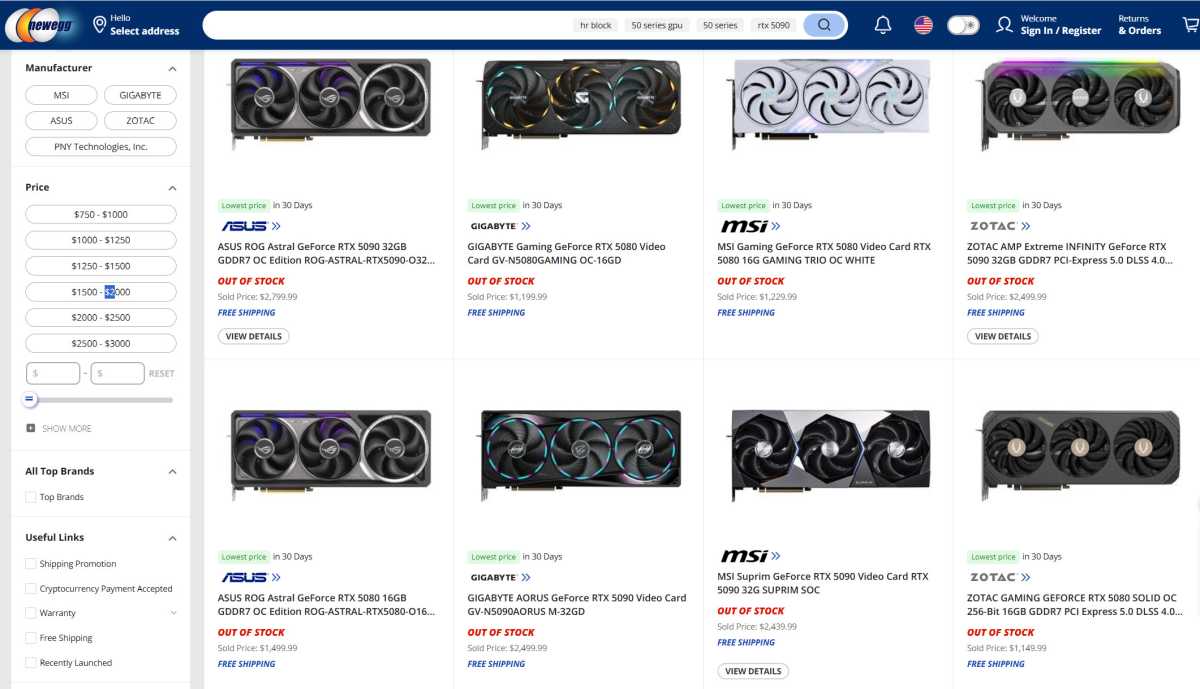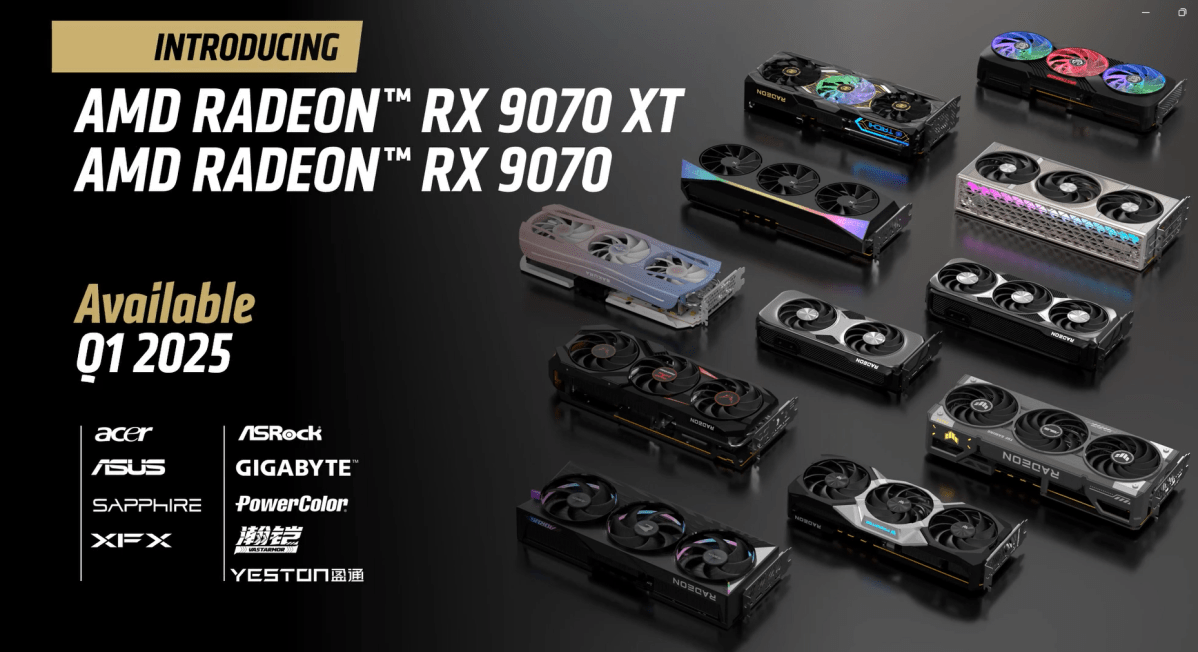GPUs are getting insanely expensive again
I apologize to anyone who happens to be walking by my house at the moment, especially if you have children present. The blue streak of cursing emanating from my office window is not meant for delicate ears. But I’m due for a GPU upgrade, and it’s going to cost a lot of money.
That’s probably not a surprise to most of you. Nvidia’s newest flagship graphics card is two-thousand-$%^ing-dollars, the most expensive consumer card the company has ever made. Customized versions of the RTX 5090 are reaching towards $3,000, to say nothing of ridiculous versions made for oligarchs. The runner-up RTX 5080 is $1,000, and probably not justifiable at that price. And unsurprisingly, both are nearly impossible to find unless you want to pay a scalper the cost of a 2002 Honda Civic.

Newegg
The reasons aren’t hard to figure out. Nvidia can’t meet the pent-up demand for powerful new cards, which always makes stock short at launch. And just like the crypto boom a few years ago, we’re now seeing regular gamers competing with AI companies that scoop up even standard GPUs by the hundred in order to power their data centers and warm up the planet so we can get terrible search results. High demand and short supply mean scalpers are trying to make a buck, not to mention their even-less-savory cousins, good old-fashioned scammers.
But if you’re experiencing sticker shock, then please sit down and take a deep breath. Because it seems like even those lofty prices are going to swing skyward soon. Tom’s Hardware has spotted retail listings of GPUs from MSI and Asus jump by $140 to $200 already, just a week after launch. (Not that you can buy them anyway, they’re all sold out and likely to remain so for weeks more.) These are prices directly from the manufacturers’ online stores, which should theoretically have the least amount of overhead.
In addition to all of the above factors, we have the Trump administration to thank for rising prices in the U.S. A blanket 10 percent tariff on all goods coming in from China means everything from CPUs to cars to crawfish will rise in price. The supply chains of modern economies are so heavily dependent upon Chinese manufacturing that it’s basically impossible for any other outcome. Even more punishing tariffs on our economic allies Canada and Mexico have been put on pause for only a month, and threatened tariffs on Taiwan (the world’s leader for silicon chip production by far) will exacerbate rising inflation across the board. Prospective U.S. tariffs on goods and materials from Europe, India, South America, the Middle East, and others have economists shaking in their wingtips.

AMD
There are other options. AMD’s new Radeon RX 9070 and 9070 XT graphics cards will arrive in early March, and Intel’s second-gen Arc cards are offering some extremely welcome competition on the low end. These GPUs are just as susceptible to shortages and increased prices as everything else, but at least they’ll be less of a wallop to your wallet in proportion.
You also have more options for PC gaming than ever before, thanks to streaming services like Nvidia GeForce Now or Xbox Game Pass and the ever-increasing power of integrated graphics. AMD’s Ryzen APUs, like the ones found in the Steam Deck and similar handhelds, offer shocking versatility.

Dominic Bayley / IDG
But the plain fact is that manufacturers and even retailers can raise prices at will, safe in the knowledge that someone will buy a GPU right away at any price. If I were seriously considering buying a new GPU right now, I’d increase my budget by 50 percent just to be safe…assuming I had that option. I’m going to sit pretty on my 4-year-old RTX 3070 for the time being.
The bad old days of the GPU shortage during and just after the COVID pandemic are coming back, especially if you happen to live in the United States. May the odds, if not the trade wars, be ever in your favor.






